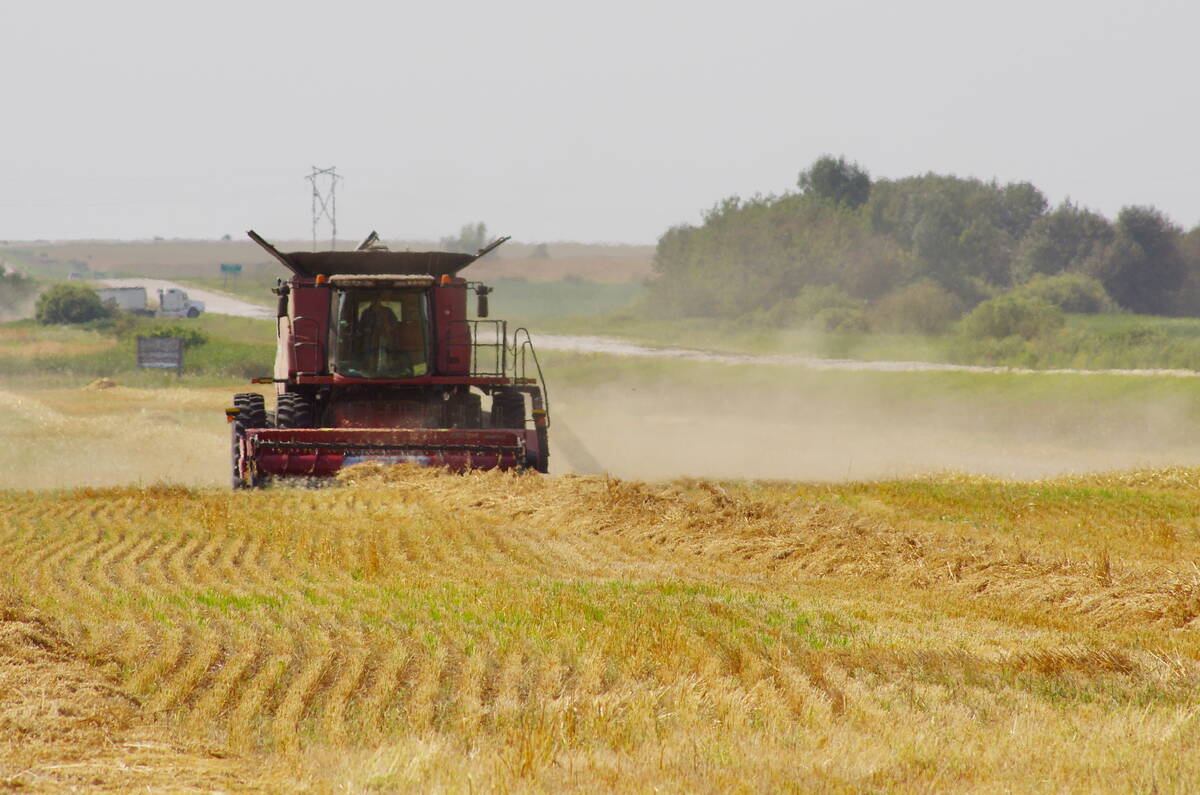Tapping gene pool | Crossbreeding Holsteins can reduce fertility problems and susceptibility to disease can be reduced
LINDELL BEACH, B.C. — Crossbreeding Holstein dairy cows is proving to offer major health benefits while still achieving good milk volume.
Holstein cows are popular in the Canadian dairy industry because of their reliability to produce large quantities of milk.
However, too much inbreeding has led to problems with fertility, susceptibility to diseases such as mastitis, and the genetic problems associated with harmful recessive genes.
University of Guelph researcher Shannon Cartwright has studied the results of crossbreeding Holstein cows with imported semen from Norwegian Red bulls.
Read Also

Herbicide resistance sprouts in Manitoba’s wild oats
Farmers across Manitoba this fall are gearing up for the latest salvo in what, for many, has become a longtime battle to beat out wild oats.
The Norwegian Red is a high yielding dairy breed developed over more than 30 years for a balance of milk, health, fertility traits and ease of calving.
Refining the breed in Norway has been attributed to breeders’ comprehensive data collection system. It has been tested as a suitable cross in Ireland, the United States and Canada.
“The benefits are that cows take advantage of hybrid vigour, meaning cows basically select the best of both worlds, or the best of both gene pools of the bull and the cow,” said Cartwright, who conducted the study while a master’s student.
“Usually in the first generation you will get high milk production and also get the benefit of Norwegian Reds, including better fertility and better health.”
She said the Norwegian dairy industry has a broad based breeding index for its bulls and the breeding of this line of dairy cows has been studied for 30 years. The breed has consistently maintained good milk production, health and fertility traits. By comparison, Holstein health traits have been studied for only a decade.
“Instead of focusing a lot on production traits, which we do in the Holstein breed, their breeding is more balanced with health generally,” she said. ”In a lot of the breeds here, we focus largely on production. We don’t have quite the balance in breeding indexes.”
Twenty-six farmers participated in the five-year study in Ontario, and 120 crossbred calves were enrolled in the program. Blood samples were taken from the calves and then again as first calf heifers when the study ended.
“All the antibody results were obtained with blood samples, and three blood samples were taken from both the calves and first calf heifers,” said Cartwright.
“The first one was to get a baseline antibody response, the second to determine a primary antibody response (their initial response to immunization), and the third to determine a secondary response to seeing the same immunization for a second time.”
In addition, a skin fold thickness test was conducted, which provides an indicator of each animal’s cell-mediated immune response. This is the response that is primarily in-volved in defence against intra-cellular pathogens such as viruses or the pathogen that causes Johne’s disease.
Results from the crossbred calves were compared with tests from an equal number of purebred Holstein calves. It showed crossbred calves had significantly greater survival rates and increased resistance to disease than the purebred Holsteins.
Cartwright was able to rate the offspring as high, average or low immune responders. Those in the high category were better able to fend off a variety of pathogens common to dairy cattle.
Animals with a strong immune response are healthier, which lowers veterinary costs and helps a farmer’s bottom line.
“First generation is usually your best, so if you do a two rotational cross, you might lose a little in your subsequent generation but you will still have some benefits.”
Cartwright said the problem with the Holstein breed is that there isn’t a lot of genetic diversity.
Intensive selection from only a few related sires in the 1980s means many of the world’s Holstein population are related to some degree.
Producers try to mitigate the challenges associated with inbreeding by careful selection of bulls, but it’s hard to solve the problem altogether.
Crossbreeding appears to be a logical first step.
“That’s my whole theory with this and why I’ve been so interested in the project,” she said.
“Even though we’re trying to reduce how much inbreeding increases, which is good, eventually we’re going to get to a point where we’re going to see really detrimental effects, so why not try and fix the problem before it happens.”
She said some farmers resist the notion of crossbreeding, continuing with the lines they know and following practices that have worked for them.
“They like their herd to be uniform. When crossbreeding, you don’t really get that. The cows could be different. They’ll be shorter, or stockier, or they might not look as ‘dairy’ as your average Holstein cow.”
Cartwright believes healthier cows are more important than herd uniformity. While she understands some farmers find it difficult to change, she says more are trying the crossbreeding route.
“There has been a good response to the research, although there is still some opposition, but overall it’s been good.”
She said breeders in other sectors of the cattle industry have been more open to crossbreeding.
“Dairy has been a straggler when it comes to crossbreeding,” she said. “It’s one of the biggest ones that did not venture into that until recently.”
















